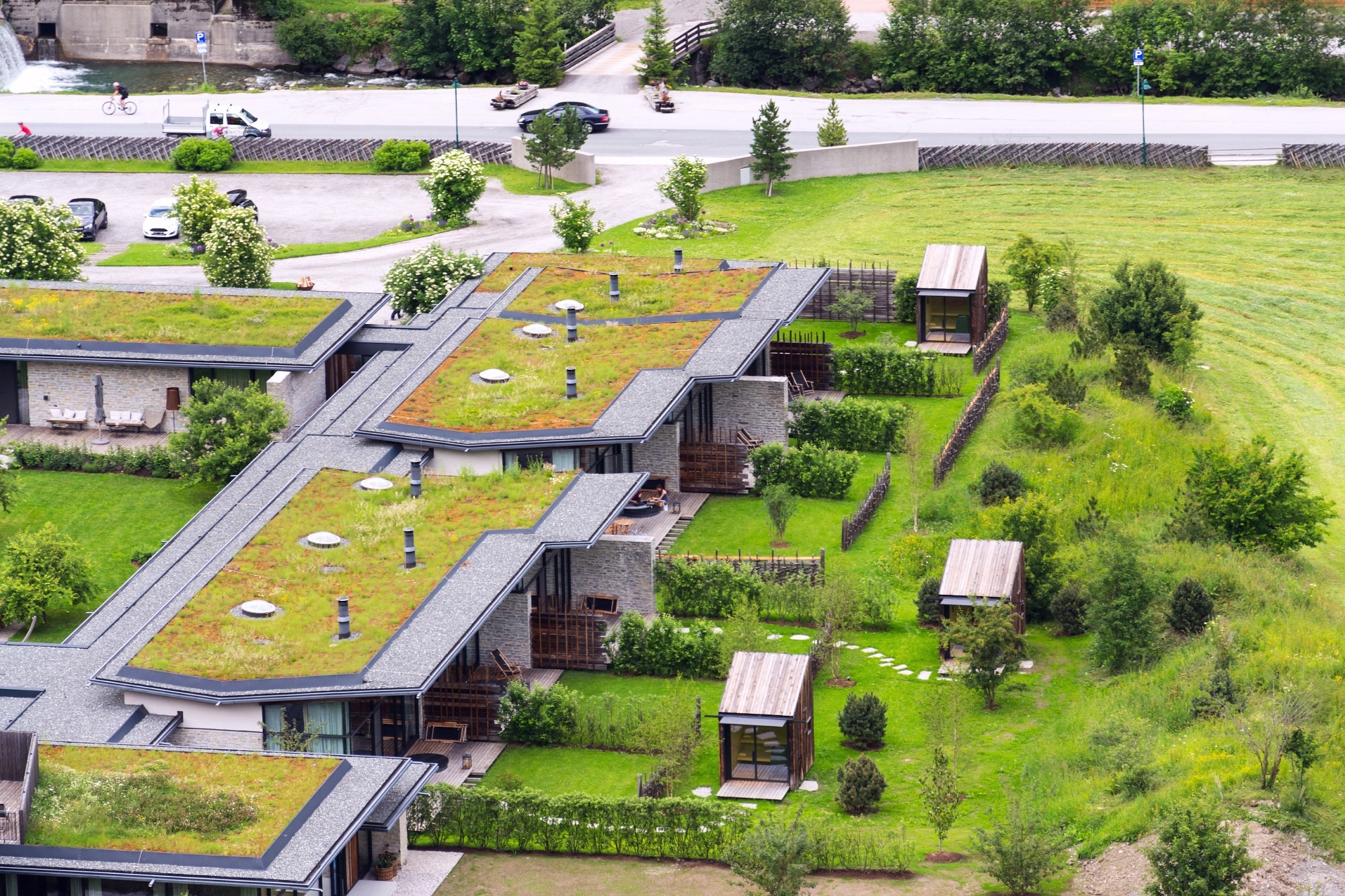A paper recently published in the journal Npj Urban Sustainability investigated the potential of cool roofs and green roofs in decreasing energy consumption by buildings in current and future climates.
 Study: Cool vs. Green: Rooftop Solutions for Urban Energy Efficiency. Image Credit: josefkubes/Shutterstock.com
Study: Cool vs. Green: Rooftop Solutions for Urban Energy Efficiency. Image Credit: josefkubes/Shutterstock.com
Background
Since the beginning of the 21st century, expansive urban growth has significantly contributed to higher per capita urban greenhouse gas emissions. The rapid accumulation of these emissions is causing major changes to global climate patterns and temperatures.
This issue has been further exacerbated in urban areas by the urban heat island effect. Rising urban temperatures substantially increase building energy consumption as a higher amount of energy is used for cooling. The built environment majorly contributes to the increased energy demands and greenhouse gas emissions, which has necessitated the development of effective methods for reduction in building energy consumption.
Role of Roofs
Green roofs and cool roofs represent two common strategies for decreasing building energy consumption. Green roofs utilize vegetation to reduce heat absorption and provide insulation, while cool roofs reduce heat absorption using reflective surfaces.
Several studies have confirmed the effectiveness of cool and green roofs in reducing energy consumption. However, while the efficiency of these roofs greatly depends on building characteristics and local climate conditions, the majority of research has not examined how variations in the built environment and ambient climate affect the energy-saving potential of these roofs.
Similarly, several studies have assessed the effectiveness of cool and green roofs under current climate conditions. However, these studies have not focused on evaluating the performance of these roofs under future climate scenarios. Thus, a comprehensive study is necessary to compare these technologies in various climate settings under both future and current conditions.
The Study
In this study, researchers proposed an integrated approach to assess the energy-saving potential of cool roofs and green roofs in the future and current climate conditions. This approach integrated building energy simulation and climate change modeling to quantify the climate change effect on building energy demand.
The objectives of the study were to develop an integrated modeling approach for performing detailed building energy simulation, identify the local ambient climate's effects on the energy-saving performance of these roof technologies, identify the urban built environment's impacts on the roof performance, and predict the energy-saving performance of these roofs under various shared socioeconomic pathways (SSPs).
Six global cities were selected, including São Paulo, Los Angeles, London, Seoul, Hong Kong, and Cairo, from various climatic zones for evaluating these roof technologies under future and current climate change scenarios.
Among these cities, Cairo had an arid climate with mild winters and hot-dry summers; Seoul was in a temperate zone with cold-dry winters and hot-humid summers; Hong Kong had a subtropical climate with mild winters and hot-humid summers; Los Angeles had a Mediterranean climate with rainy winters, dry summers, and modest transitions in temperature; São Paulo had a subtropical climate with dry winters and modest temperature transitions; and London had a temperate oceanic climate with humid, rainy, and cool weather all year round.
In the sensitivity analysis, researchers only considered temperature variations for three SSP scenarios, including SSP 5–8.5, SSP 2–4.5, and SSP 1–2.6, from 2021 to 2100. Then, the future energy-saving potentials of green and cool roofs were investigated under these three SSP scenarios. Additionally, the future energy-saving performance trends were projected until 2200 based on the relationship between climate projections until 2100 and the energy-saving of both roof systems.
Research Findings
The integrated modeling framework provided more accurate monthly and hourly building energy use estimations compared to conventional modeling methods. Both green and cool roofs' energy-saving effects primarily depended on the climate zones where they were implemented. These roofs demonstrated significant potential in decreasing cooling energy demand across different climates.
Green roofs were more sensitive to variations in outdoor environmental conditions compared to cool roofs, as the health and growth of plants on rooftops are affected by environmental factors like sunlight and precipitation. However, the cool roofs' energy-saving effectiveness remained unaffected by environmental variations.
Thus, cool roofs were more suitable than green roofs for decreasing cooling energy consumption in regions with cloudy or rainy conditions and warm climates, while both roof types were suitable for reducing energy demands year-round in hot and sunny regions. However, cool roofs led to an increase in heating energy demand in cities with colder climates.
Additionally, the energy-saving effects of the cool and green roofs were also impacted by the urban built environment. For instance, low-rise buildings displayed the best energy-saving performance, while a decreasing trend was observed in energy-saving performance with the increasing height of the buildings.
In future climate conditions with high emissions of greenhouse gases/SSP 5–8.5, green roofs and cool roofs could save more cooling energy for buildings. For instance, the implementation of green and cool roofs resulted in a 65.51 % and 71.72 % reduction in heating, ventilation, and air conditioning (HVAC) consumption, respectively, at the city level by 2100. The global warming effect on decreasing building heating energy demand must be considered during future climate projections.
To summarize, the findings of this study demonstrated the feasibility of using cool roofs and green roofs for building energy savings in current and future climates. However, their effectiveness varies based on climate zones and the urban built environment.
Journal Reference
Jia, S., Weng, Q., Yoo, C., Xiao, H., Zhong, Q. (2024). Building energy savings by green roofs and cool roofs in current and future climates. Npj Urban Sustainability, 4(1), 1-13. https://doi.org/10.1038/s42949-024-00159-8, https://www.nature.com/articles/s42949-024-00159-8
Disclaimer: The views expressed here are those of the author expressed in their private capacity and do not necessarily represent the views of AZoM.com Limited T/A AZoNetwork the owner and operator of this website. This disclaimer forms part of the Terms and conditions of use of this website.